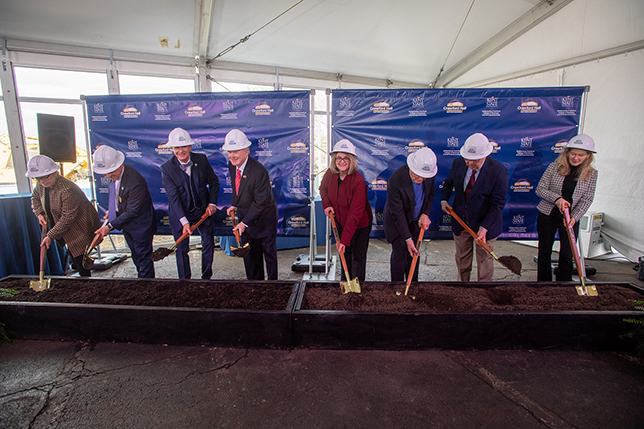Kent State Breaks Ground on Business College’s Future Home
Kent State University in Kent, Ohio, recently broke ground on a new facility for the Ambassador Crawford College of Business and Entrepreneurship. The ceremony for Crawford Hall took place on Tuesday, March 8, with an attendance of more than 400 including university officials, students and alumni, donors and elected officials. Construction is scheduled for completion in 2024, according to a news release.
The building is named after Ambassador Edward F. Crawford and his family, who facilitated its construction with the largest single philanthropic gift in the university’s history. The university has raised more than $20 million from more than 120 donors to go toward the project.

Kent State University officials and donors to the Crawford Hall project officially break ground for the new building.
“The university and our students will shine even brighter and touch more corners of the world with our research and our alumni thanks to Crawford Hall and the support of Ambassador Edward F. Crawford and his family,” said Kent State President Todd Diacon. “We are very thankful to each of the donors who chose to partner with us to see our vision for the future of business education become a reality at the Ambassador Crawford College of Business and Entrepreneurship.”
The new facility will stand four stories and include active learning classrooms, a business analytics lab, an entrepreneurship lab, a behavioral research hub, sales and trading labs, a business theatre and a student success center. The new Crawford Hall will be one of the largest academic buildings on any of Kent State’s campuses, and it will offer 50% more square footage than the business school’s current space.
“My fellow students are bright, innovative and creative. Crawford Hall will contain all the necessary tools to develop our skills and become the students, businesspeople and entrepreneurs we strive to one day become,” said Kent State marketing student Juliana Buonaiuto at the groundbreaking ceremony. “I cannot wait to see what Crawford Hall holds for the student body and how it will foster the growth of such talented young minds.”
About the Author
Matt Jones is senior editor of Spaces4Learning. He can be reached at [email protected].